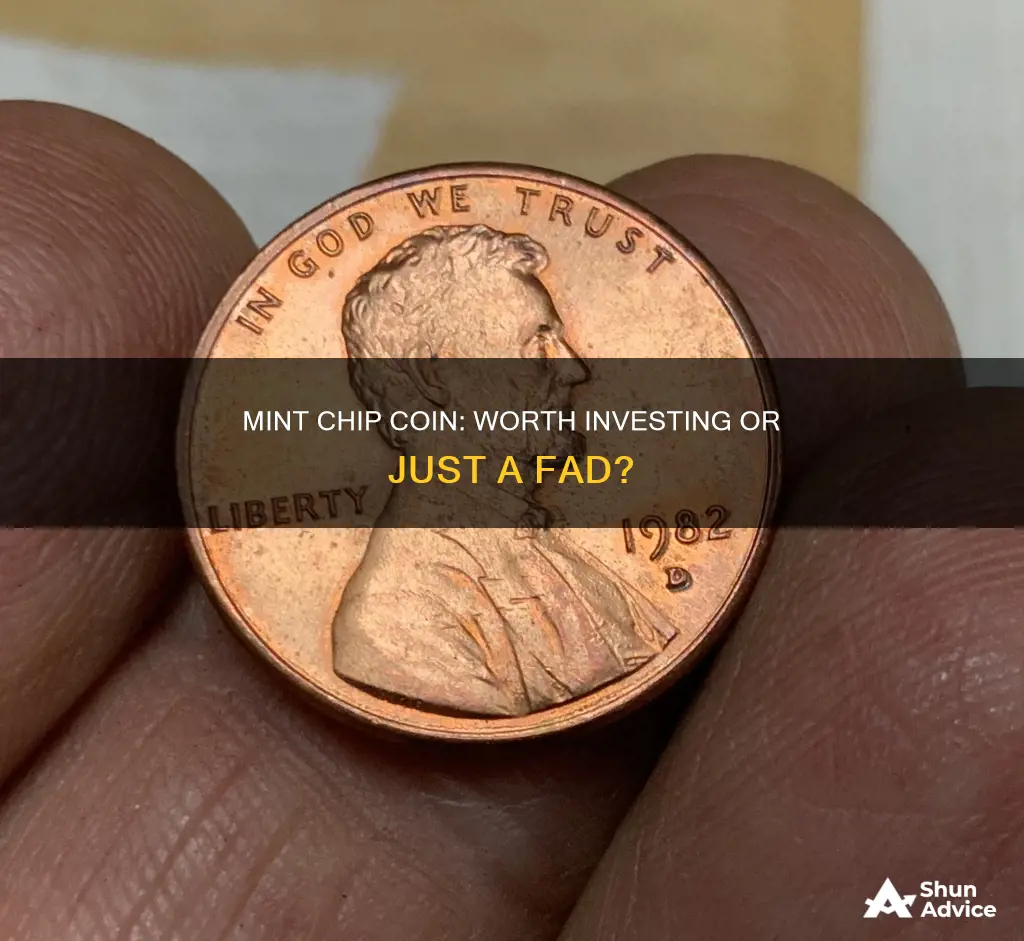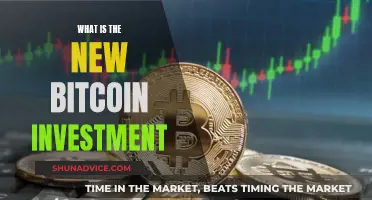
Investing in rare coins is a potentially profitable endeavour, but it is not without its risks and challenges. The value of a rare coin is influenced by various factors, including its rarity, demand, historical significance, and metal content. While rare coins can provide significant long-term gains, they are not ideal for short-term profits. The market for rare coins can be volatile, with prices fluctuating based on supply and demand. One of the key challenges in investing in rare coins is determining which coins will become valuable collectibles. Additionally, the process of buying and selling rare coins requires careful research and legitimate sources to avoid scams and counterfeit coins. Overall, investing in rare coins can be a complex but potentially rewarding strategy as part of a diversified portfolio.
What You'll Learn

US Mint coins: historical background and investment potential
The US Mint, a bureau of the Department of Treasury, is responsible for producing coinage for the country and controlling the movement of bullion. The first US Mint was established in Philadelphia in 1792 by the Coinage Act, with the aim of standardising currency across the nation. Before this, during the Colonial Period and after the Revolutionary War, a mix of foreign and domestic coins circulated, including British pounds, German thalers, and Spanish milled dollars.
The Coinage Act of 1792 established a decimal system based on hundredths, mirroring the familiar Spanish fractions. This resulted in the following coin denominations: copper half cents and cents; silver half dimes, dimes, quarters, half dollars, and dollars; and gold quarter eagles ($2.50), half eagles ($5), and eagles ($10). The first circulating coins, 11,178 copper cents, were delivered in March 1793.
As the nation expanded, so too did the US Mint, with new branches opening in gold-rich regions like Charlotte, Dahlonega, and New Orleans. The San Francisco branch opened in response to the California Gold Rush, and by the end of 1854, it had produced over $4 million in gold coins. The Denver branch, originally an assay office, began producing gold and silver coins in 1906.
Today, the Mint maintains production facilities in Philadelphia, San Francisco, Denver, and West Point, and a bullion depository in Fort Knox, Kentucky.
When considering the investment potential of US Mint coins, investors weigh factors such as rarity, demand, historical significance, and metal content. Rare coins are particularly desirable among collectors and investors, and US Mint coins have produced many rare pieces over two centuries of production. The value of these coins can be further amplified by their historical significance and aesthetic appeal.
US Mint coins with high premium values due to their collectible and investment appeal are good options for those looking to maximise returns. Uncirculated coin sets, for example, are highly sought-after due to their limited circulation. Additionally, coins with higher professional grading scores, indicating minimal wear and tear, tend to fetch higher prices.
US Mint bullion coins, known for their high value, are also good investment options. These include the Silver Eagles, which have demonstrated significant profitability despite higher initial costs.
In summary, US Mint coins have a rich history dating back to the standardisation of currency in 1792. The investment potential of these coins lies in their rarity, historical significance, aesthetic value, and metal content. While the decision to invest is subjective, US Mint coins offer a diverse range of options for collectors and investors alike.
Forth Coin: Smart Investment or Risky Business?
You may want to see also

Factors influencing the value of Mint coins
Several factors influence the value of Mint coins, and these can be subject to change over time. Here are some of the key considerations:
Rarity and Mintage Numbers
The law of supply and demand applies to Mint coins. The rarer a coin, the more valuable it tends to be. A coin's rarity is often determined by the number of that particular coin minted during its production year. For example, a lower number of coins minted in 1909 by the San Francisco Mint compared to the Philadelphia Mint makes the former more valuable.
Historical Significance
Mint coins with connections to significant historical events or eras are often more desirable and, therefore, more valuable. For instance, coins minted during the Great Depression or featuring influential people can be highly sought-after.
Physical Condition
The physical state of a coin is a critical factor in its value. Coins in perfect or near-perfect condition, known as "mint state," are more desirable and tend to cost more. Uncirculated coins, or those that have not been released into circulation, are also more valuable as they have no signs of wear or damage.
Metal Content and Precious Metals
The type of metal a coin is made of can significantly influence its value. Precious metals such as gold, silver, and platinum are desirable due to their scarcity in the market. The value of gold and silver coins can fluctuate with the market price of these metals. Additionally, the overall value of a coin can be influenced by its metal content exceeding its face value, leading people to melt the coins for profit.
Market Demand and Collector Interest
Global economic trends, investor sentiment, and collector interest can affect the demand for and value of Mint coins. For example, marketing campaigns by coin dealers or popular coin collecting series can drive up demand and prices. Collector interest can be cyclical, with interest in certain series rising and falling over time.
Grading and Errors
The grading of a coin, typically on a scale of 1 to 70, also influences its value. Higher-grade coins are in better condition and are more expensive. Additionally, minting errors, such as misprints or double strikes, can create rare variations that appeal to collectors, increasing a coin's value.
These factors, along with others like provenance, design, and limited editions, contribute to the complex valuation of Mint coins. Understanding these elements is essential for collectors and investors looking to maximise the potential of their coin collections.
SLP Coin: A Good Investment Option?
You may want to see also

Mint coins vs bullion
Bullion coins are a type of physical coin made from precious metals, usually gold and silver, though platinum and palladium are also used. They are minted in weights that are fractions of one troy ounce. Many countries have their own official bullion coins, such as the American Eagle series and the Canadian Maple Leaf series.
Bullion coins are intended for investors and are valued by the weight of the precious metal they contain, which fluctuates based on its daily price. They are not sold to the general public through entities like the United States Mint, but rather through dealers located in the country.
Mint coins, on the other hand, are minted by government entities like the US Mint. They are often minted in limited quantities and can be purchased directly from the US Mint website. Mint coins are usually more expensive than their standard counterparts due to their exclusivity.
Mint coins can be a good investment because they possess historic and aesthetic value. Their value can increase over time, and they offer diversification to a portfolio. Rare mint coins are especially sought-after by collectors and investors, as they can fetch more money.
Bullion coins, being made of precious metals, can also be a hedge against inflation. Their value is perceived to be more stable than fiat currency, which can be affected by fiscally irresponsible government practices.
Both bullion and mint coins have their advantages as investments. Bullion coins are valued primarily for their precious metal content, while mint coins have the added benefit of rarity and historical significance, which can increase their value over time. Ultimately, the decision to invest in bullion or mint coins depends on individual preferences and investment goals.
Filecoin Crypto: Smart Investment or Risky Gamble?
You may want to see also

How to buy US Mint coins
US Mint coins are a good investment option due to their reliable purity levels and historical background. The US Mint produces a range of legal tender coinage, numismatic products, and bullion coins.
The easiest way to buy US Mint coins is through their official website, usmint.gov. The website offers an easy-to-use interface for purchases, and its customer service is friendly and professional. The US Mint also has a toll-free ordering line, 1-800-USA-MINT (872-6468), but wait times have been reported to be increasing over the years.
The US Mint usually sells current coins and coin sets, but they also offer previous years' coins and sets. Some popular options include annual Proof Sets, Uncirculated Coin Sets, America the Beautiful Quarters, and collector's versions of the American Eagle coins, such as Silver and Gold Eagles.
Be cautious of US Mint look-alike companies that use misleading advertisements, posing as official government agencies. These companies charge much higher premiums than the US Mint.
The US Mint occasionally releases coins with limited availability, causing high demand among collectors. The best way to secure these limited-edition coins is through the US Mint website, as telephone orders are often less successful during these high-volume periods.
The US Mint also offers subscriptions for certain coins and sets, billing your credit card automatically and sending you the set when it becomes available. Commemorative coins and sets are also available for direct purchase from the US Mint and are released throughout the year based on their production schedule.
While common modern US coins and sets typically decrease in value, making them less attractive investments, buying them directly from the US Mint is the most cost-effective option for collectors.
Grayscale Bitcoin Investment: Is It a Smart Move?
You may want to see also

Selling US Mint coins
US Mint coins are a good investment option because of their reliable purity levels and their aesthetic and historic value. The best US Mint coins to invest in are those with historic and aesthetic value, as these tend to fetch the highest prices.
When selling US Mint coins, it is important to focus on those that have high premium values due to their collectability and investment appeal. Uncirculated coin sets, for example, tend to be more valuable because of their limited circulation and resultant scarcity. It is also important to ensure that the coins have been professionally graded, with the highest grades being the most valuable.
The US Mint does not sell its bullion coins directly to the public. Instead, it distributes them through a network of official distributors called "Authorized Purchasers", who then sell to wholesalers, financial institutions, and other secondary retailers. As a result, individuals looking to sell US Mint coins can do so through these secondary retailers or through specialist coin dealers and auctioneers.
Coin dealers such as American Rare Coin and Collectibles and American Rarities Rare Coin Company offer competitive, transparent pricing for US Mint coins and sets. These companies also provide free appraisals and no-obligation offers for coin collections.
To maximise returns, it is important to understand the various factors that influence the value of US Mint coins, such as rarity, demand, historical significance, and metal content. Additionally, it is crucial to only transact through reputable sources that adhere to governmental regulations to safeguard both the coin's integrity and the investor's interests.
Civic Coin: A Smart Investment Decision?
You may want to see also
Frequently asked questions
Investors weigh factors such as rarity, demand, historical significance, and metal content. Rare coins tend to retain their value and even accumulate more value over time.
The United States Mint has been producing coins since 1792. US Mint coins are known for their reliable purity levels, and their hallmark is the Silver Eagle.
US Mint coins are a good investment for those seeking to diversify their portfolios away from stocks and bonds. They can add historical and aesthetic value to a collection. However, they are harder to benefit from when compared to regular precious metal bullion, and it is unlikely that you will recover your initial investment without prior research.
Dealers selling legitimate collectible coins have them graded by professionals, who assess the coins on various metrics and give them a score from 1 to 70. The Federal Trade Commission (FTC) recommends asking for the coin's grade and investigating the grading service the dealer claims to use.
The US Mint does not redeem, grade, or appraise minted coins. However, they do redeem broken or mutilated coins for their scrap metal. Banks may accept or reject collectible coins at their discretion, and you can sell US Mint coins to banks.







